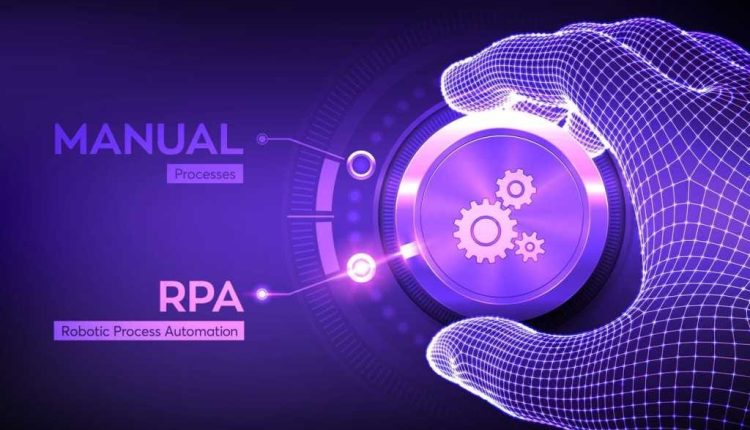In the ever-evolving landscape of modern business operations, efficiency and accuracy are paramount. Companies are constantly seeking innovative ways to streamline their processes, reduce manual labor, and minimize errors. Two technologies that have emerged as game-changers in this quest for optimization are Optical Character Recognition (OCR) and Robotic Process Automation (RPA). This article delves into the synergy between OCR and RPA, exploring how they work together to transform and enhance various aspects of business operations.
Understanding OCR and RPA
OCR (Optical Character Recognition)
Optical Character Recognition is a technology that enables the conversion of printed or handwritten text into machine-encoded text. OCR software processes scanned documents, images, or PDFs, recognizing characters and their layout to create editable and searchable data. This technology has come a long way, with advancements in machine learning and artificial intelligence greatly improving accuracy and reliability.
RPA (Robotic Process Automation)
Robotic Process Automation involves the use of software robots or “bots” to automate repetitive, rule-based tasks within business processes. These bots mimic human interactions with computer systems and applications, allowing for the automation of tasks such as data entry, data extraction, and report generation. RPA can dramatically increase operational efficiency and reduce errors by eliminating human intervention in routine tasks.
The Synergy Between OCR and RPA
Data Extraction and Input
One of the most powerful applications of OCR and RPA synergy is in data extraction and input. OCR technology is used to extract text and data from documents, invoices, and forms. RPA bots can then take this extracted data and input it into relevant systems or databases automatically. This eliminates the need for manual data entry, reducing errors and freeing up employees to focus on more valuable tasks.
Invoice Processing
In the finance and accounting departments of businesses, OCR and RPA combine forces to revolutionize invoice processing. OCR can extract invoice details such as invoice numbers, dates, and line items from scanned invoices. RPA bots can validate this information, cross-check it with purchase orders, and initiate payment processing, all without human intervention. This not only accelerates the payment cycle but also enhances accuracy in financial transactions.
Document Classification and Sorting
OCR can be used to classify and sort documents based on their content. For example, incoming emails and attachments can be scanned, and the OCR technology can identify the type of document (e.g., contracts, purchase orders, or invoices). RPA bots can then automatically route these documents to the appropriate department or personnel for further processing. This streamlines document management and ensures that critical documents are addressed promptly.
Customer Service and Communication
In the realm of customer service, OCR and RPA collaboration can be a game-changer. OCR technology can extract relevant customer information from emails, chat logs, or support tickets. RPA bots can use this information to generate personalized responses or trigger specific actions, such as creating support tickets or escalating issues to the appropriate team. This leads to quicker response times and improved customer satisfaction.
Compliance and Reporting
Compliance is a critical concern in many industries, and accurate record-keeping is essential. OCR technology can assist in digitizing paper records, while RPA bots can ensure that data is consistently and accurately recorded in compliance with regulatory requirements. Furthermore, RPA can generate reports and notifications to alert stakeholders of any compliance deviations, enabling timely corrective actions.
Benefits of OCR and RPA Synergy
The synergy between OCR and RPA offers numerous benefits for businesses:
- Enhanced Accuracy: By automating data extraction and input, the combination of OCR and RPA significantly reduces the risk of human errors.
- Efficiency and Productivity: Routine tasks that once consumed valuable employee time can be completed swiftly and accurately, allowing employees to focus on more strategic and creative endeavors.
- Cost Savings: Reduced manual labor and increased efficiency lead to cost savings in the long run.
- Improved Compliance: The automation of compliance-related tasks ensures that regulatory requirements are consistently met.
- Enhanced Customer Experience: Speedy and personalized responses to customer inquiries improve overall customer satisfaction.
- Scalability: OCR and RPA solutions can be scaled to accommodate growing business needs.
Implementation Considerations
While the synergy between OCR and RPA is promising, successful implementation requires careful planning and consideration of various factors:
- Data Quality: The accuracy of OCR depends on the quality of the source documents. Ensure that documents are legible and well-organized.
- Process Analysis: Before implementing RPA, thoroughly analyze existing processes to identify the best opportunities for automation.
- Integration: Ensure seamless integration between OCR and RPA systems and existing software applications.
- Security: Implement robust security measures to protect sensitive data and ensure compliance with data privacy regulations.
- Training: Provide training to employees who will work alongside RPA bots and monitor their performance.
- Continuous Improvement: Regularly assess and optimize automated processes to adapt to changing business needs.
Conclusion
The synergy between OCR and RPA represents a significant advancement in business operations. By automating data extraction, input, and various routine tasks, businesses can enhance efficiency, reduce errors, improve compliance, and ultimately deliver better customer experiences. As OCR and RPA technologies continue to evolve, their combined potential to transform business operations is limitless. To stay competitive in today’s fast-paced business world, organizations should consider harnessing the power of OCR and RPA synergy.



Comments are closed.